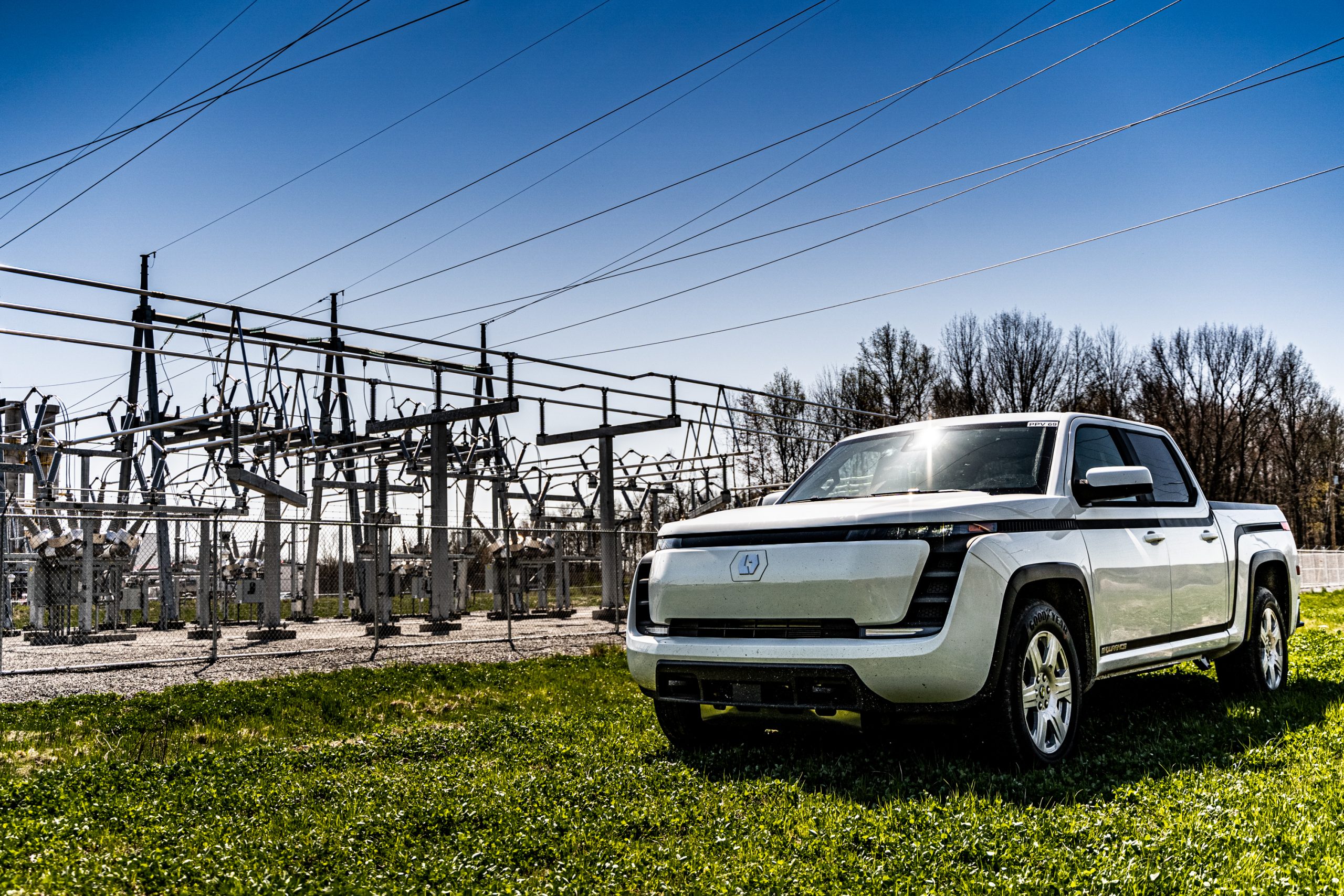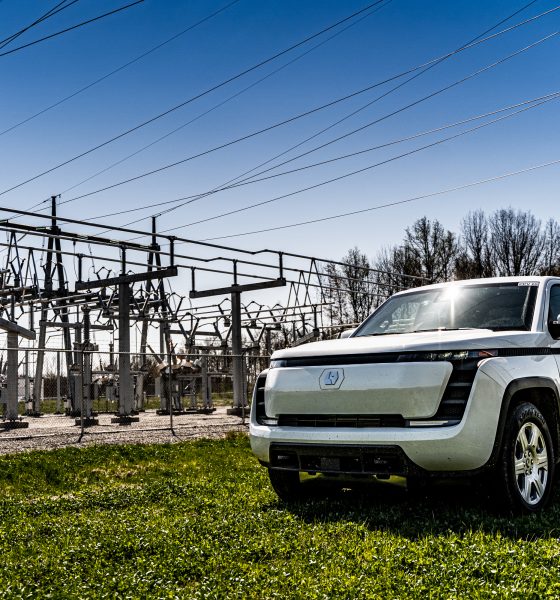

News
Foxconn fully commits to Lordstown and puts its money where its mouth is
Foxconn put its money where its mouth is by fully committing to Lordstown Motors with a new $170 million investment package that secures a future collaboration for a joint electric vehicle project.
After first investing in Lordstown Motors last year by purchasing its production facility in Ohio, Foxconn has continued to expand its partnership with the automaker. Foxconn’s joint partnership with Lordstown helped get the automaker’s production up and running and helped secure financial stability in the company after previous leadership failed to launch automotive manufacturing.
Foxconn made additional equity investments in Lordstown Motors totaling $170 million, the company announced last night. $100 million will go toward a newly created Series A Convertible Preferred Stock, while the additional $70 million will be used to purchase Lordstown’s common stock. With the purchase, Foxconn now holds 18.3 percent of Lordstown’s common stock on a Pro-forma basis giving them the right to designate two members of the automaker’s Board of Directors.
Foxconn will relinquish these Board positions if it does not maintain a certain level of ownership in Lordstown’s common stock, it said.
The $100 million investment for direct Preferred stock will help fund Lordstown’s “development and design activities for a new electric vehicle program in collaboration with Foxconn.” Meanwhile, the $70 million of common stock will be used to fund general corporate activities.
The sale of 12.9 million shares of Common stock will exchange hands on November 22 at a price of $1.79 per share. This will result in initial proceeds of $22.7 million. Meanwhile, 300,000 shares of Preferred stock at a purchase price of $100 per share, yielding proceeds of $30 million.
The remaining 26.9 million shares of Common stock will be purchased at $1.76 per share but will not be finalized until the deal is reviewed by agencies such as the Committee on Foreign Investment in the United States, pending other approvals. This portion of the deal will yield $47.3 million.
The Preferred stock brings more interesting developments to the table between the two companies. Foxconn will purchase the remaining Preferred stock shares, given that Lordstown achieves EV program funding milestones agreed upon by the companies. Foxconn and Lordstown did not disclose these funding milestones.
As a result of the investments, Lordstown and Foxconn are terminating their existing joint venture involving Lordstown EV Corporation and Foxconn EV Technology, Inc.
All new project developments are expected to fall under Lordstown Motor Company.
Daniel Ninivaggi, Lordstown’s CEO, commented on the new Foxconn investment:
“Since announcing our first transaction with Foxconn more than a year ago, it has been our objective to develop a broad strategic partnership that leverages the capabilities of both companies. Foxconn’s latest investment is another step in that direction. Our Board of Directors and management team strongly believe that deep collaboration with the Foxconn EV ecosystem, including the Mobility-in-Harmony (MIH) open-source platform, offers tremendous opportunities to meet our mutual ambition to accelerate EV adoption globally. I look forward to welcoming Foxconn representatives to our Board and exploring other ways to deepen our partnership.”
Lordstown recently launched production of the Endurance all-electric pickup truck in Q3.
Disclosure: Joey Klender is not a Lordstown or Foxconn investor.

Elon Musk
Starlink passes 9 million active customers just weeks after hitting 8 million
The milestone highlights the accelerating growth of Starlink, which has now been adding over 20,000 new users per day.

SpaceX’s Starlink satellite internet service has continued its rapid global expansion, surpassing 9 million active customers just weeks after crossing the 8 million mark.
The milestone highlights the accelerating growth of Starlink, which has now been adding over 20,000 new users per day.
9 million customers
In a post on X, SpaceX stated that Starlink now serves over 9 million active users across 155 countries, territories, and markets. The company reached 8 million customers in early November, meaning it added roughly 1 million subscribers in under seven weeks, or about 21,275 new users on average per day.
“Starlink is connecting more than 9M active customers with high-speed internet across 155 countries, territories, and many other markets,” Starlink wrote in a post on its official X account. SpaceX President Gwynne Shotwell also celebrated the milestone on X. “A huge thank you to all of our customers and congrats to the Starlink team for such an incredible product,” she wrote.
That growth rate reflects both rising demand for broadband in underserved regions and Starlink’s expanding satellite constellation, which now includes more than 9,000 low-Earth-orbit satellites designed to deliver high-speed, low-latency internet worldwide.
Starlink’s momentum
Starlink’s momentum has been building up. SpaceX reported 4.6 million Starlink customers in December 2024, followed by 7 million by August 2025, and 8 million customers in November. Independent data also suggests Starlink usage is rising sharply, with Cloudflare reporting that global web traffic from Starlink users more than doubled in 2025, as noted in an Insider report.
Starlink’s momentum is increasingly tied to SpaceX’s broader financial outlook. Elon Musk has said the satellite network is “by far” the company’s largest revenue driver, and reports suggest SpaceX may be positioning itself for an initial public offering as soon as next year, with valuations estimated as high as $1.5 trillion. Musk has also suggested in the past that Starlink could have its own IPO in the future.
News
NVIDIA Director of Robotics: Tesla FSD v14 is the first AI to pass the “Physical Turing Test”
After testing FSD v14, Fan stated that his experience with FSD felt magical at first, but it soon started to feel like a routine.

NVIDIA Director of Robotics Jim Fan has praised Tesla’s Full Self-Driving (Supervised) v14 as the first AI to pass what he described as a “Physical Turing Test.”
After testing FSD v14, Fan stated that his experience with FSD felt magical at first, but it soon started to feel like a routine. And just like smartphones today, removing it now would “actively hurt.”
Jim Fan’s hands-on FSD v14 impressions
Fan, a leading researcher in embodied AI who is currently solving Physical AI at NVIDIA and spearheading the company’s Project GR00T initiative, noted that he actually was late to the Tesla game. He was, however, one of the first to try out FSD v14.
“I was very late to own a Tesla but among the earliest to try out FSD v14. It’s perhaps the first time I experience an AI that passes the Physical Turing Test: after a long day at work, you press a button, lay back, and couldn’t tell if a neural net or a human drove you home,” Fan wrote in a post on X.
Fan added: “Despite knowing exactly how robot learning works, I still find it magical watching the steering wheel turn by itself. First it feels surreal, next it becomes routine. Then, like the smartphone, taking it away actively hurts. This is how humanity gets rewired and glued to god-like technologies.”
The Physical Turing Test
The original Turing Test was conceived by Alan Turing in 1950, and it was aimed at determining if a machine could exhibit behavior that is equivalent to or indistinguishable from a human. By focusing on text-based conversations, the original Turing Test set a high bar for natural language processing and machine learning.
This test has been passed by today’s large language models. However, the capability to converse in a humanlike manner is a completely different challenge from performing real-world problem-solving or physical interactions. Thus, Fan introduced the Physical Turing Test, which challenges AI systems to demonstrate intelligence through physical actions.
Based on Fan’s comments, Tesla has demonstrated these intelligent physical actions with FSD v14. Elon Musk agreed with the NVIDIA executive, stating in a post on X that with FSD v14, “you can sense the sentience maturing.” Musk also praised Tesla AI, calling it the best “real-world AI” today.
News
Tesla AI team burns the Christmas midnight oil by releasing FSD v14.2.2.1
The update was released just a day after FSD v14.2.2 started rolling out to customers.

Tesla is burning the midnight oil this Christmas, with the Tesla AI team quietly rolling out Full Self-Driving (Supervised) v14.2.2.1 just a day after FSD v14.2.2 started rolling out to customers.
Tesla owner shares insights on FSD v14.2.2.1
Longtime Tesla owner and FSD tester @BLKMDL3 shared some insights following several drives with FSD v14.2.2.1 in rainy Los Angeles conditions with standing water and faded lane lines. He reported zero steering hesitation or stutter, confident lane changes, and maneuvers executed with precision that evoked the performance of Tesla’s driverless Robotaxis in Austin.
Parking performance impressed, with most spots nailed perfectly, including tight, sharp turns, in single attempts without shaky steering. One minor offset happened only due to another vehicle that was parked over the line, which FSD accommodated by a few extra inches. In rain that typically erases road markings, FSD visualized lanes and turn lines better than humans, positioning itself flawlessly when entering new streets as well.
“Took it up a dark, wet, and twisty canyon road up and down the hill tonight and it went very well as to be expected. Stayed centered in the lane, kept speed well and gives a confidence inspiring steering feel where it handles these curvy roads better than the majority of human drivers,” the Tesla owner wrote in a post on X.
Tesla’s FSD v14.2.2 update
Just a day before FSD v14.2.2.1’s release, Tesla rolled out FSD v14.2.2, which was focused on smoother real-world performance, better obstacle awareness, and precise end-of-trip routing. According to the update’s release notes, FSD v14.2.2 upgrades the vision encoder neural network with higher resolution features, enhancing detection of emergency vehicles, road obstacles, and human gestures.
New Arrival Options also allowed users to select preferred drop-off styles, such as Parking Lot, Street, Driveway, Parking Garage, or Curbside, with the navigation pin automatically adjusting to the ideal spot. Other refinements include pulling over for emergency vehicles, real-time vision-based detours for blocked roads, improved gate and debris handling, and Speed Profiles for customized driving styles.








